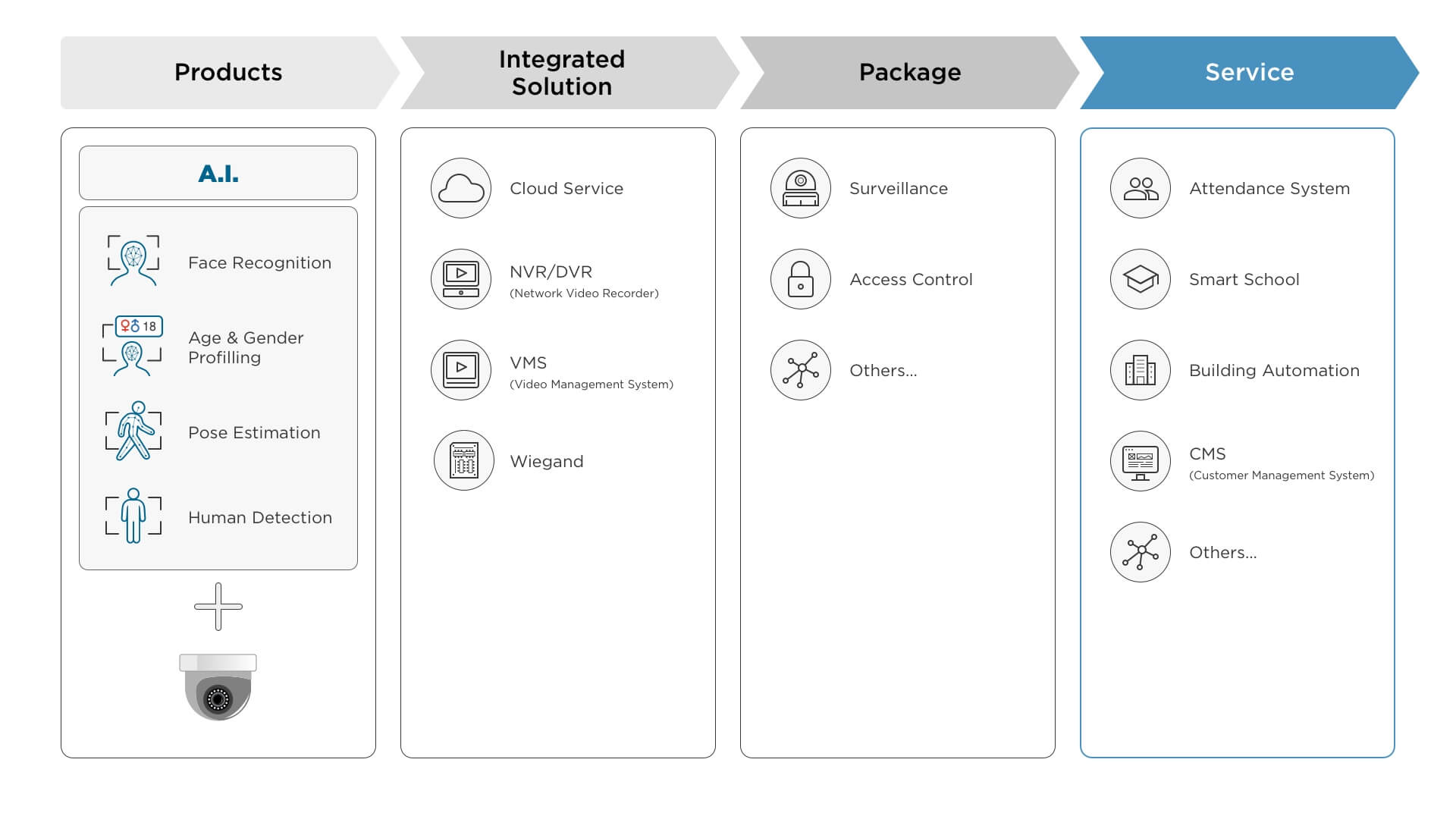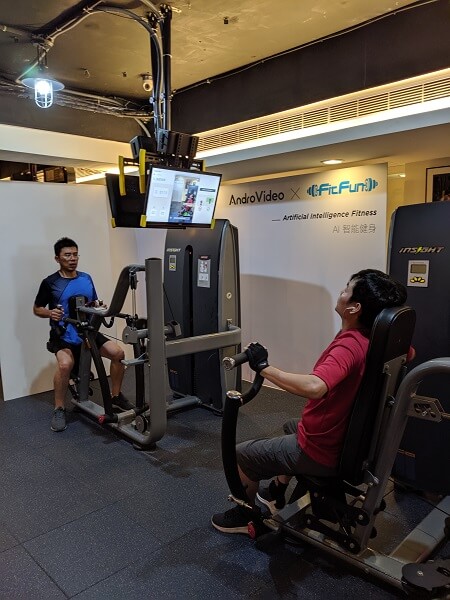Needless to say,
AI has become a major trend with various security and non-security applications. While AI has been run on the backend for quite some time, increasingly the processing capability has moved to the edge. The market, then, is seeing the emergence of more and more AI cameras that can meet the user’s
edge computing needs.
It goes without saying that running AI requires high computing power and is usually done in the cloud, which can incur huge transmission, storage and computing cost for the end user. Yet today, thanks to advances in hardware and software technologies, AI processing is more and more done on the edge. From a video perspective, this means complex algorithms such as object detection and facial recognition can now be processed in the camera, allowing the user to respond to situations in real time with minimal latency.
Making AI more accessible
 AndroVideo's offerings are shown on this diagram.
AndroVideo's offerings are shown on this diagram.
Indeed, putting AI on the edge is the best way to “bring AI closer to the user,” said Jonny Wu, VP of
AndroVideo, a maker of Android-based AI cameras that cater to different vertical markets.
“We’ve been talking about AI for the past several years, and we all know what AI can do. However, we feel AI hasn’t really reached the end user, who is unlikely to afford a server or pay huge monthly fees for cloud-based AI. What they want is AI that can be easily installed at home to perform certain everyday tasks,” Wu said. “And that’s what this company aims to do – to leverage its software and hardware capabilities to optimize AI so it can be run the edge. Only by moving AI to the camera can end users truly feel the powers of AI.”
Android-based edge solutions provider
AndroVideo was founded in 2015 with a core focus on AI edge computing, before being acquired by Ability in 2018. According to Wu, putting AndroVideo and Ability together creates a synergy that benefits both companies.
“AndroVideo already has excellent software capability. Ability, on the other hand, is a leading camera ODM that works with various famous brands. Ability’s complete manufacturing, testing and quality control capability can well complement AndroVideo,” he said.
As opposed to most conventional, Linux-based camera manufacturers, AndroVideo positions itself as an Android-based edge solutions provider. Today, it’s one of the few, if not the only, manufacturer of Android-based cameras to which the company’s own as well as other third-party AI algorithms can be added.
“As you know Android is the platform with the largest number of software developers. This is why we decided to use the Android OS in the first place. By providing an AI camera that’s Android-based, we allow AI developers to easily add their algorithms that cater to the user’s specific needs and requirements,” Wu said.
 AndroVideo's solution in
AndroVideo's solution in
a gym application.
Different applications
With strong backgrounds in AI, AndroVideo engineers write their own AI algorithms including
facial recognition, human detection, age/gender recognition and pose estimation that are optimized for the camera’s Qualcomm-Android architecture. The camera has already “landed” in several projects including video surveillance,
smart retail, healthcare, smart factory and even smart workout.
“We’ve begun a gym trial where our camera running a pose estimation algorithm lets the user know whether their exercise position is correct, are they likely to get hurt, or if their workout is effective,” Wu said. “Pose estimation can also be applied to retail, where the camera knows not only if there’s a customer in a particular area, but also whether they are extending their hand to get a product, thus offering further business intelligence.”
Overseas expansion
In terms of geographic region, AndroVideo already has projects in Southeast Asia, Japan and EMEA. However its core market is still Taiwan, which accounts for about 70 percent of the company’s total sales. This is something that Wu wants to eventually see changed.
“We want to do proof-of-concept in different projects in Taiwan first to ensure product quality and reliability, then expanding further overseas,” Wu said. “We’d like to eventually raise the oversea proportion to 80 percent.”
Closer to everyday life
Indeed, with many self-proclaimed “AI cameras” in the market, how to differentiate and stand out becomes important. Using the Android OS to allow different AI applications in certain niche markets is how AndroVideo differentiates, and already to certain success. With the likes of AndroVideo and other AI camera manufacturers, we can expect AI to be delivered to the edge and ultimately to our everyday life.